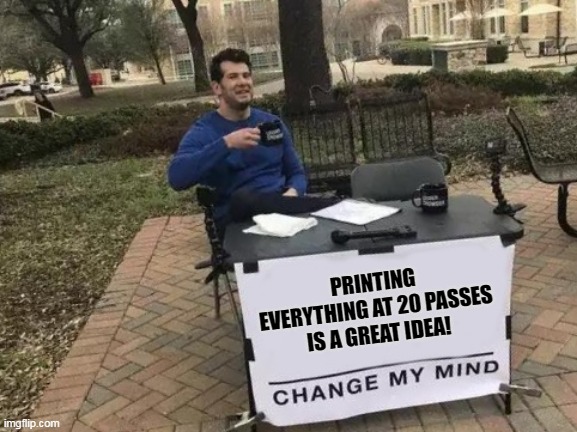Hi everyone
Just curious as to what resolution everyone tends to print at? I know it's preference but I'm looking to tweak some settings.
Here's my list:
Workwear Vinyl: 16 Pass Uni Directional
I do this because the detail is small on chest logos and I want to get the best possible quality as it's up close.
Wraping/Vehicle graphics: 8 Pass High Quality / Bi Directional
I'm not sure if this is the way to go ,seems ok, seems fast enough but I wonder what everyone else does?
Banners: 6 Pass, Bi Directional
Not sure if this take too long to print but the quality is ok, again what does everyone else use?
Just curious as to what resolution everyone tends to print at? I know it's preference but I'm looking to tweak some settings.
Here's my list:
Workwear Vinyl: 16 Pass Uni Directional
I do this because the detail is small on chest logos and I want to get the best possible quality as it's up close.
Wraping/Vehicle graphics: 8 Pass High Quality / Bi Directional
I'm not sure if this is the way to go ,seems ok, seems fast enough but I wonder what everyone else does?
Banners: 6 Pass, Bi Directional
Not sure if this take too long to print but the quality is ok, again what does everyone else use?

